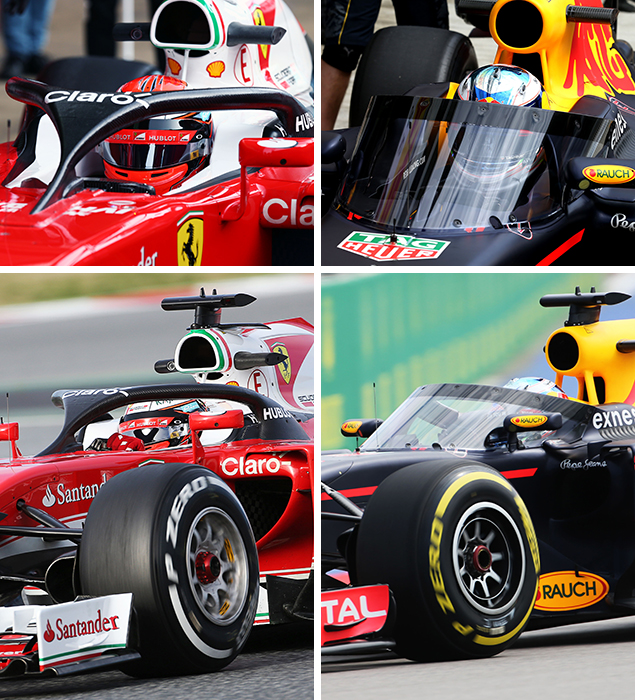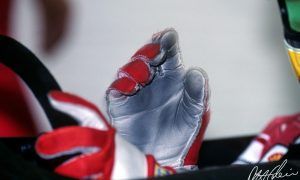
©XPB Images
AEROSCREEN: SLEEK BUT EASY TO SOIL?
Everyone has different tastes. But while aesthetics are not the determining factor, they cannot be totally ignored either. From that perspective, one can side with Jenson Button and deem the Aeroscreen more visually pleasing that the Halo. Less cumbersome, the Red Bull concept blends more smoothly in the overall design of the car, and its half canopy layout adds a cool futuristic touch. The windscreen looks quite harmonious on the RB12 when the Halo, whose outline is less refined, seems to be an add-on that has been dropped on the Ferrari.
However, the Aeroscreen could potentially hamper visibility in case of rain. After all, there is no wiper in F1… And what about oil projections or tyre marbles splattering the canopy? Red Bull team principal Christian Horner was quick to mention the idea of having specific tear-offs (similar in concept to the ones drivers have on their helmet visors) that would be removed during pit stops. It also remains to be seen how reflection might affect driver vision, especially during night races.
Devised and designed in Milton Keynes, the windscreen protects from small debris that can be particularly hazardous, as highlighted by Massa’s 2009 Hungarian GP accident. When the Brazilian was struck in the head by the errant spring, his helmet visor got destroyed and he ended up suffering near-fatal facial and head injuries.
By comparison, the open and windscreen-less structure of the Halo does not offer optimum protection against smaller projectiles. But isn’t it what the crash helmet is here for in the first place? That’s why the FIA will probably need to define more precisely the technical specifications and purposes of the cockpit protection system it wants to see introduced in F1.

©XPB Images







